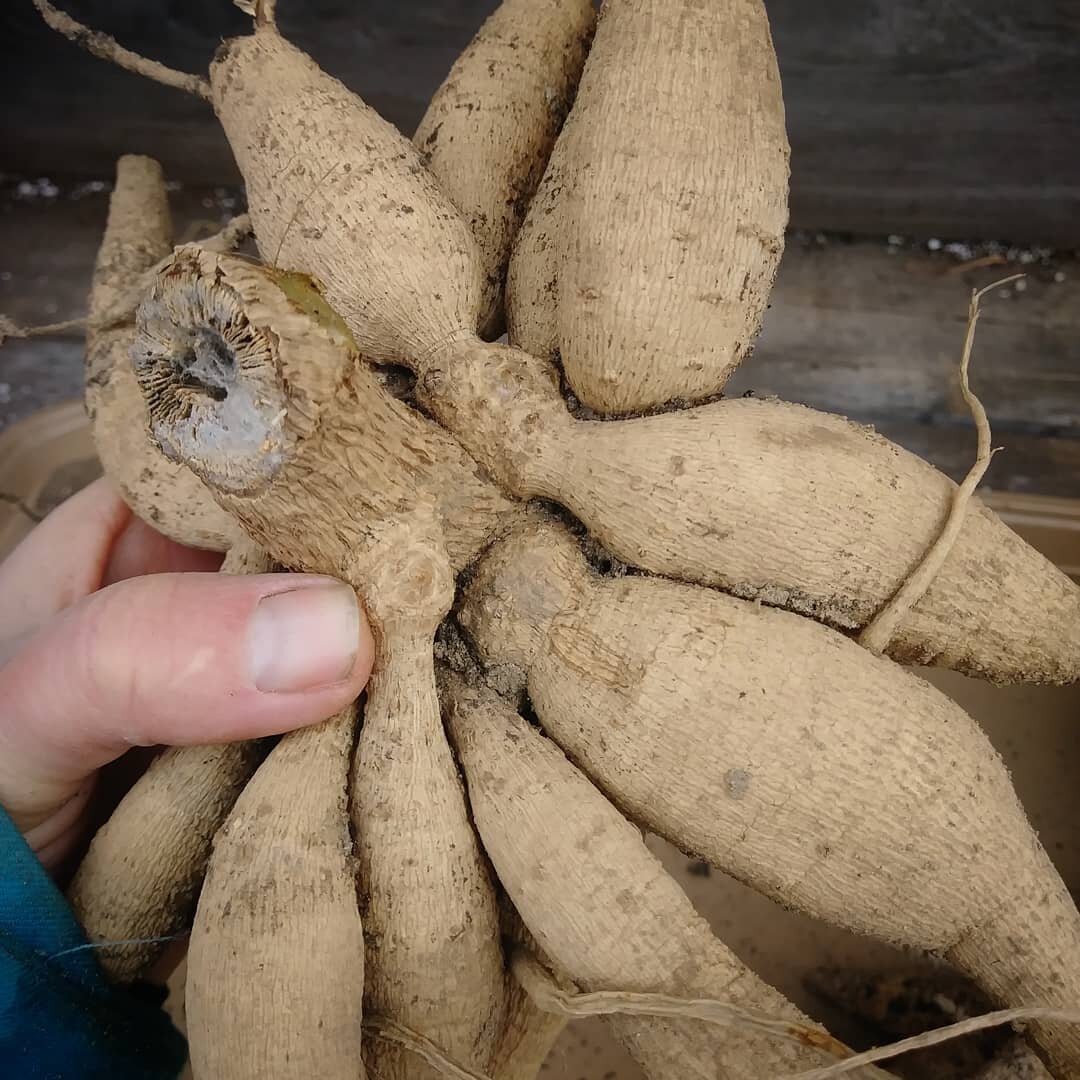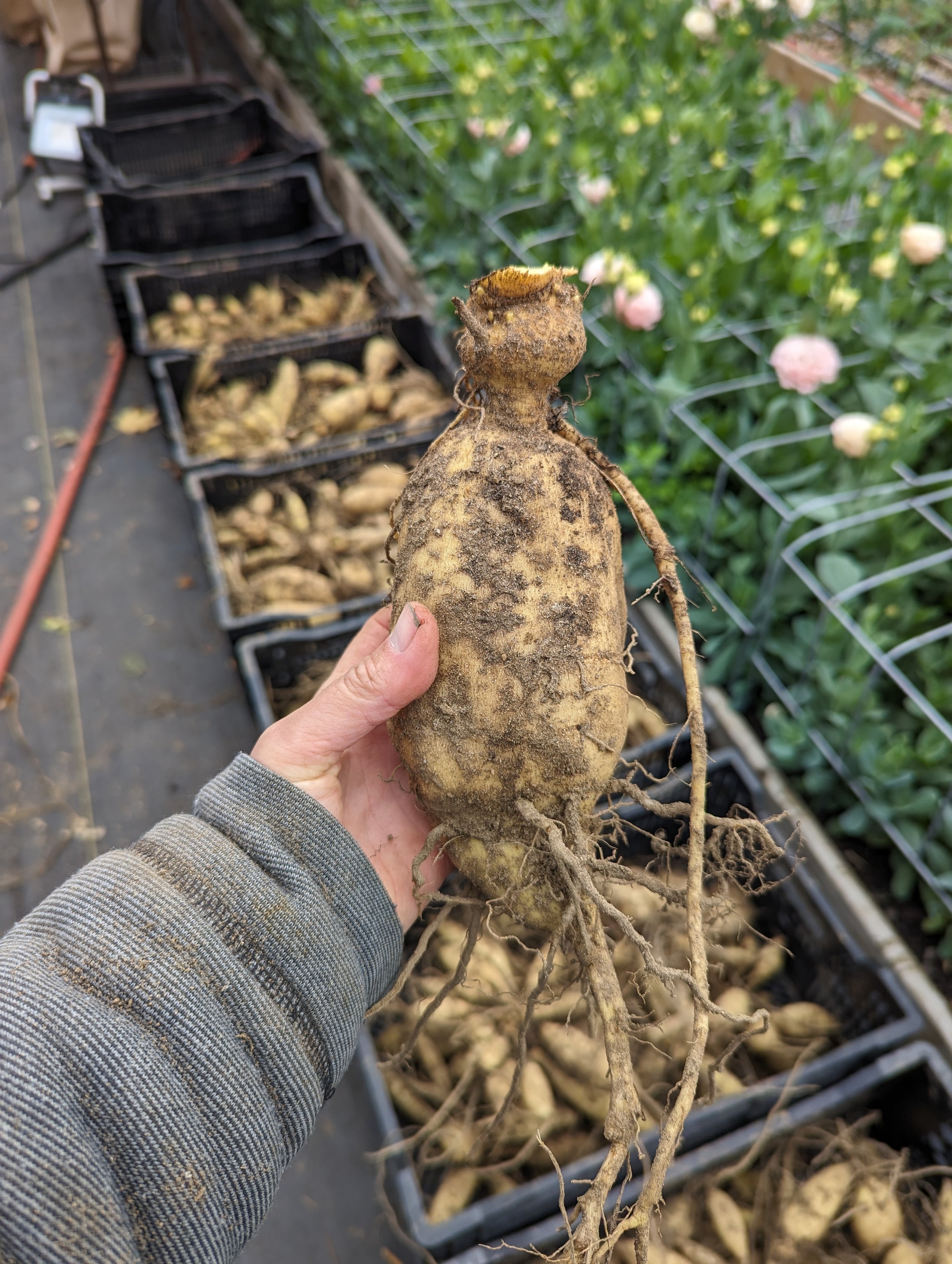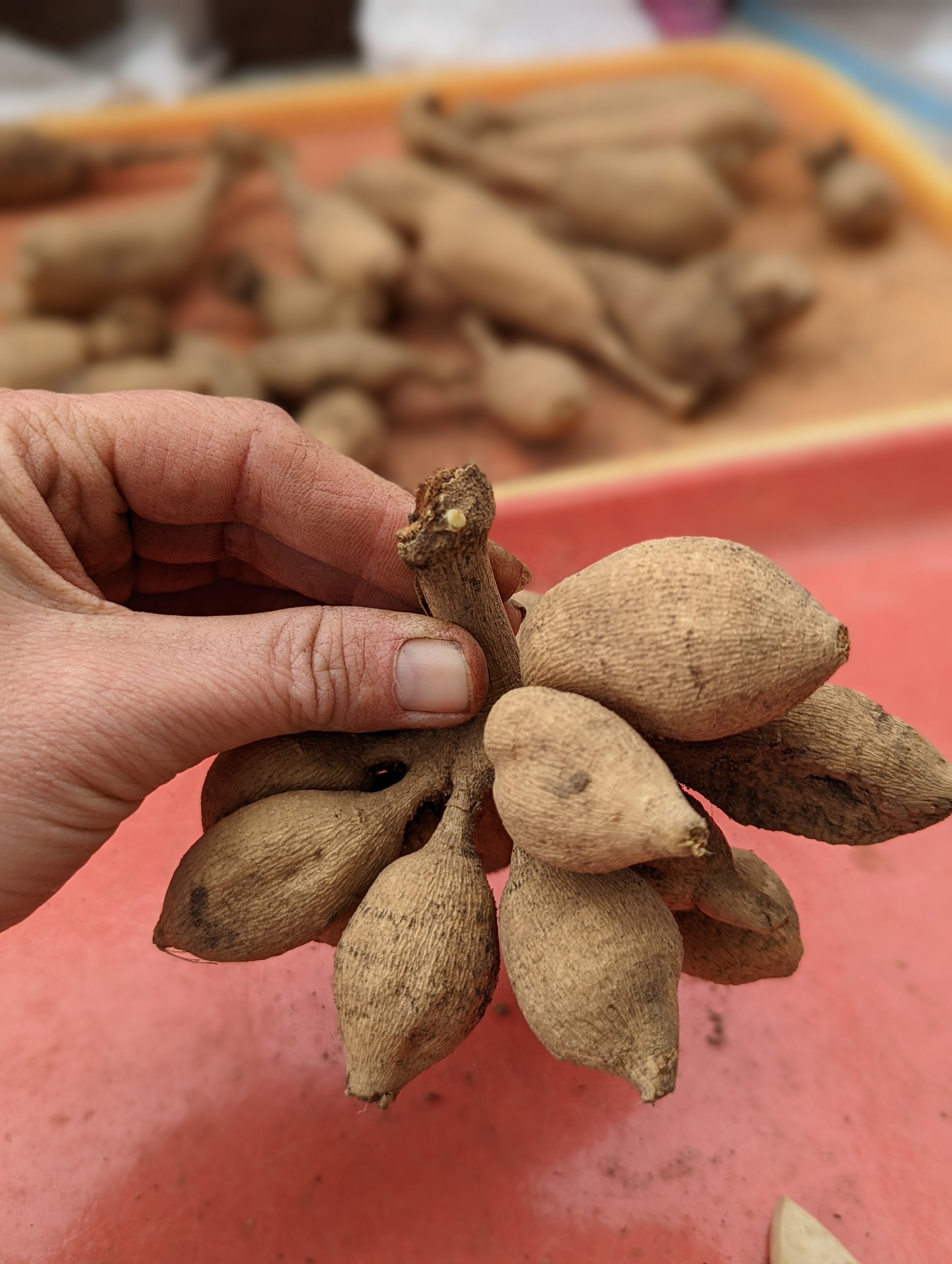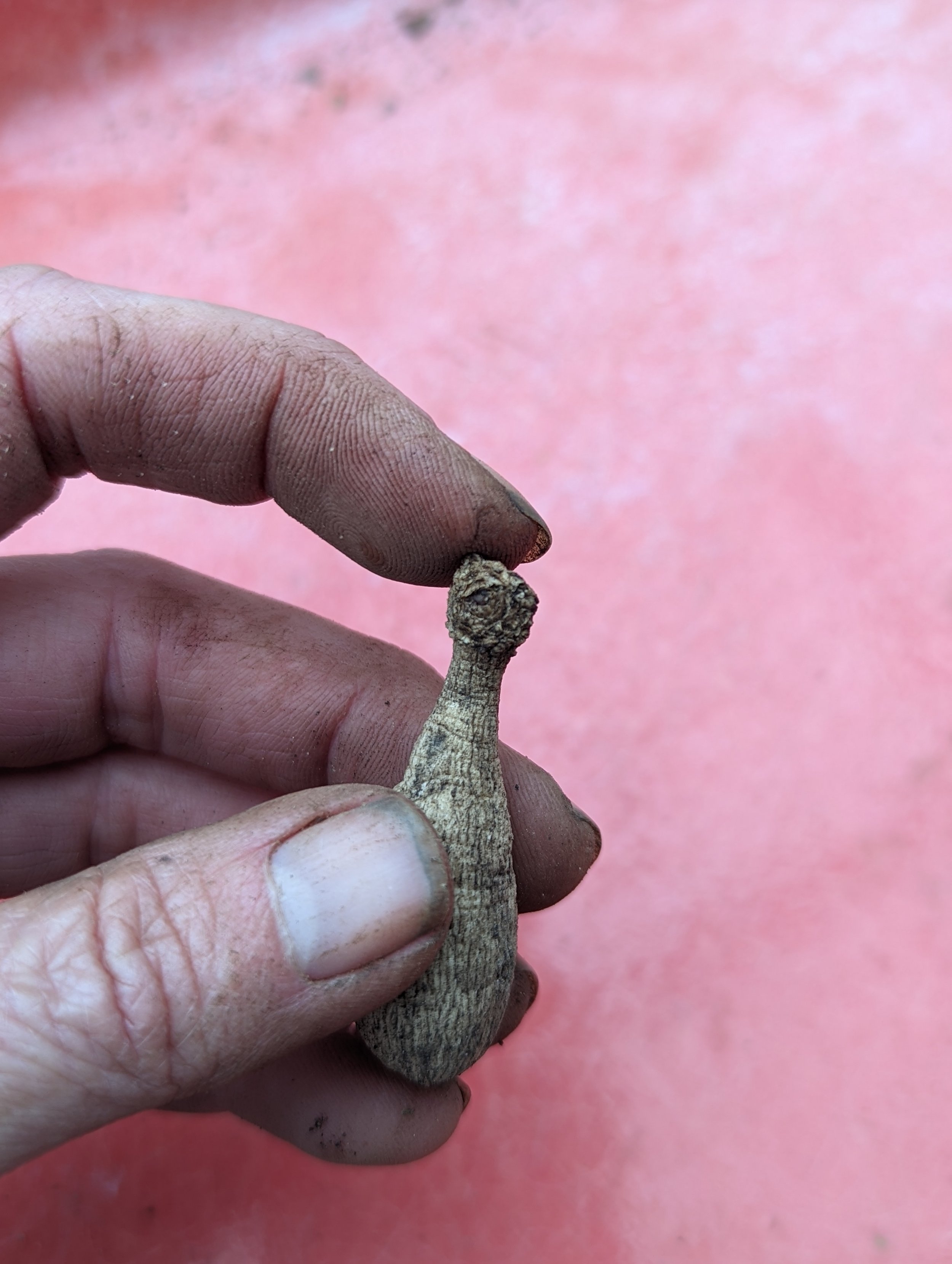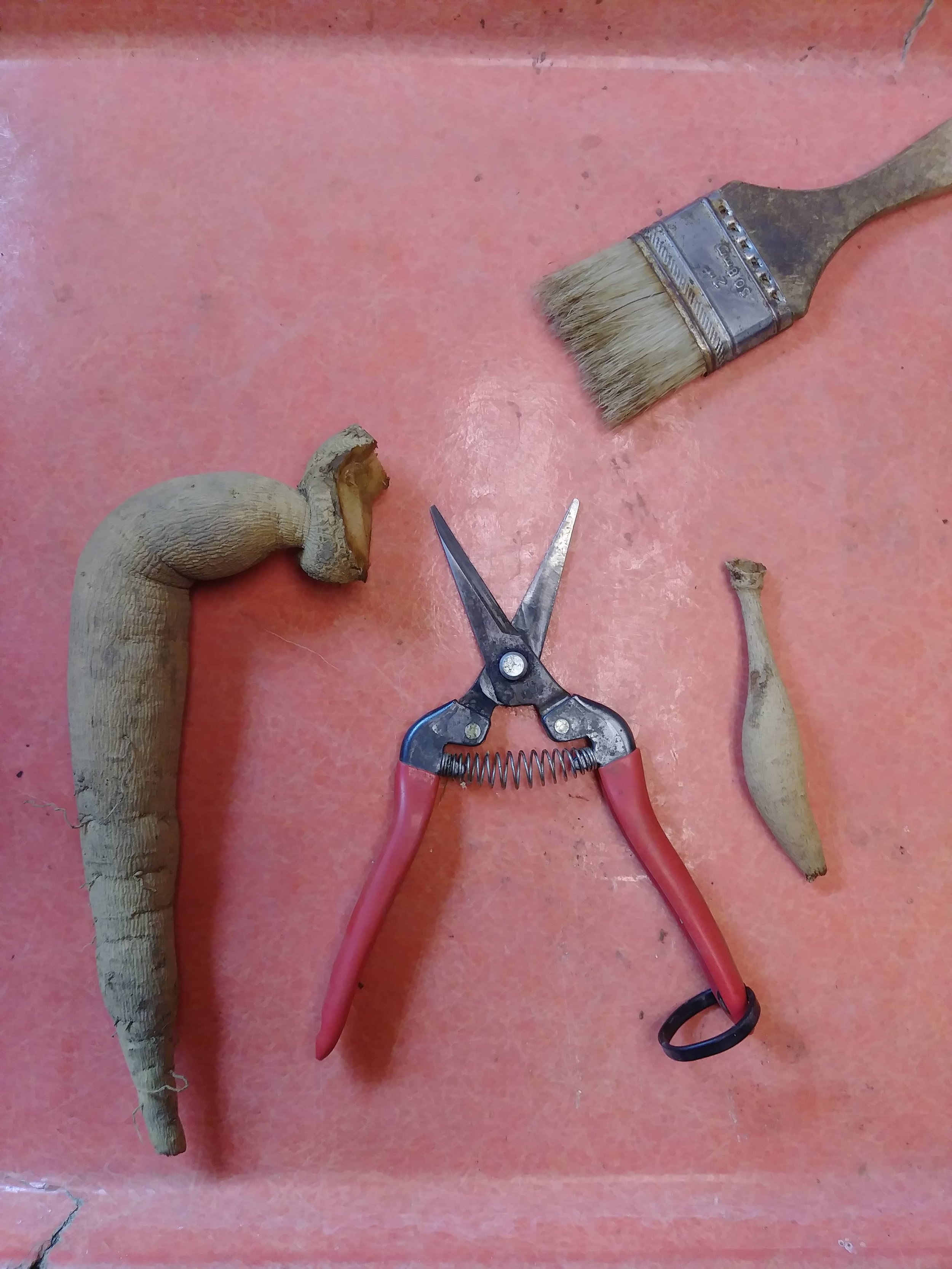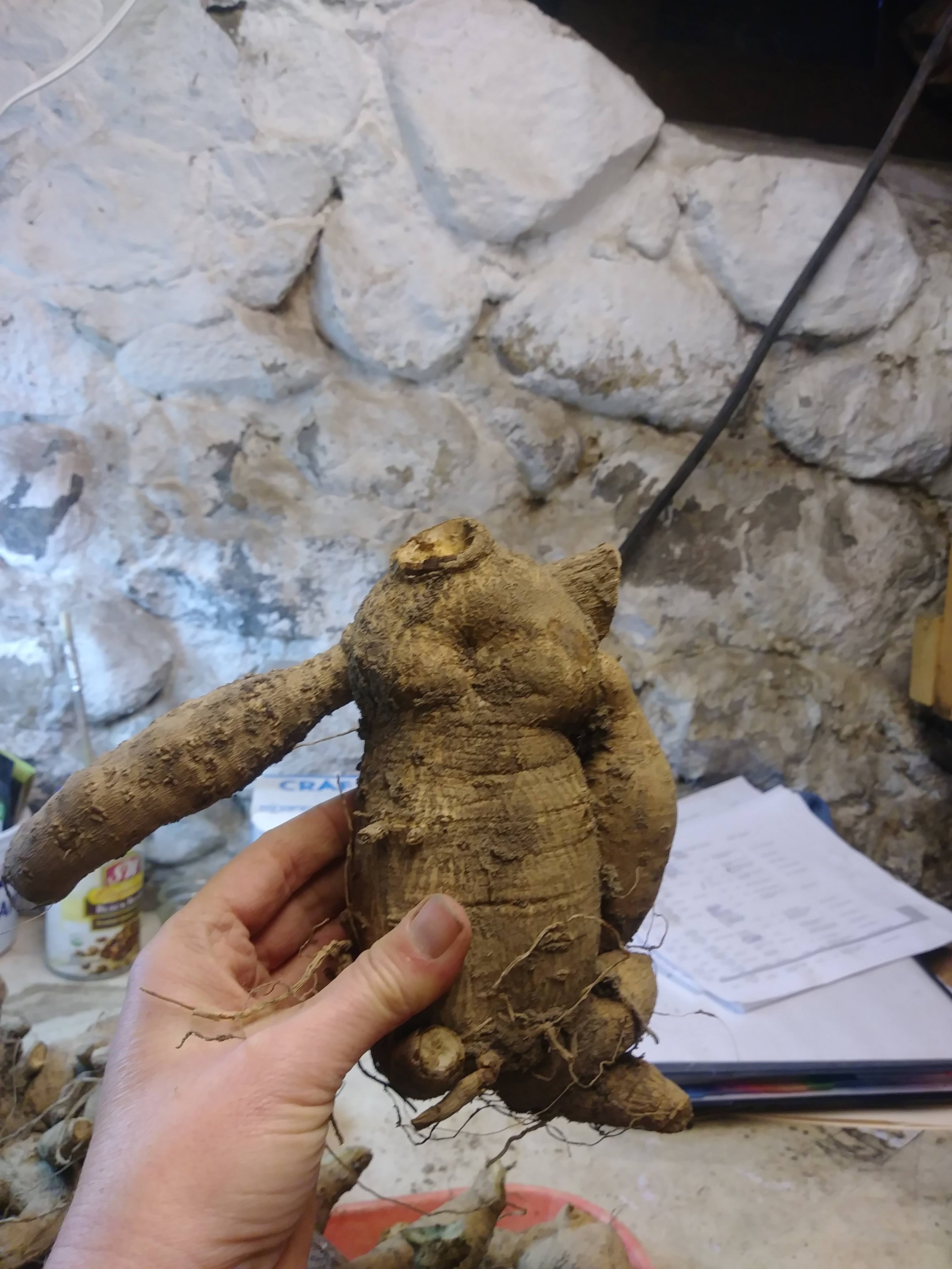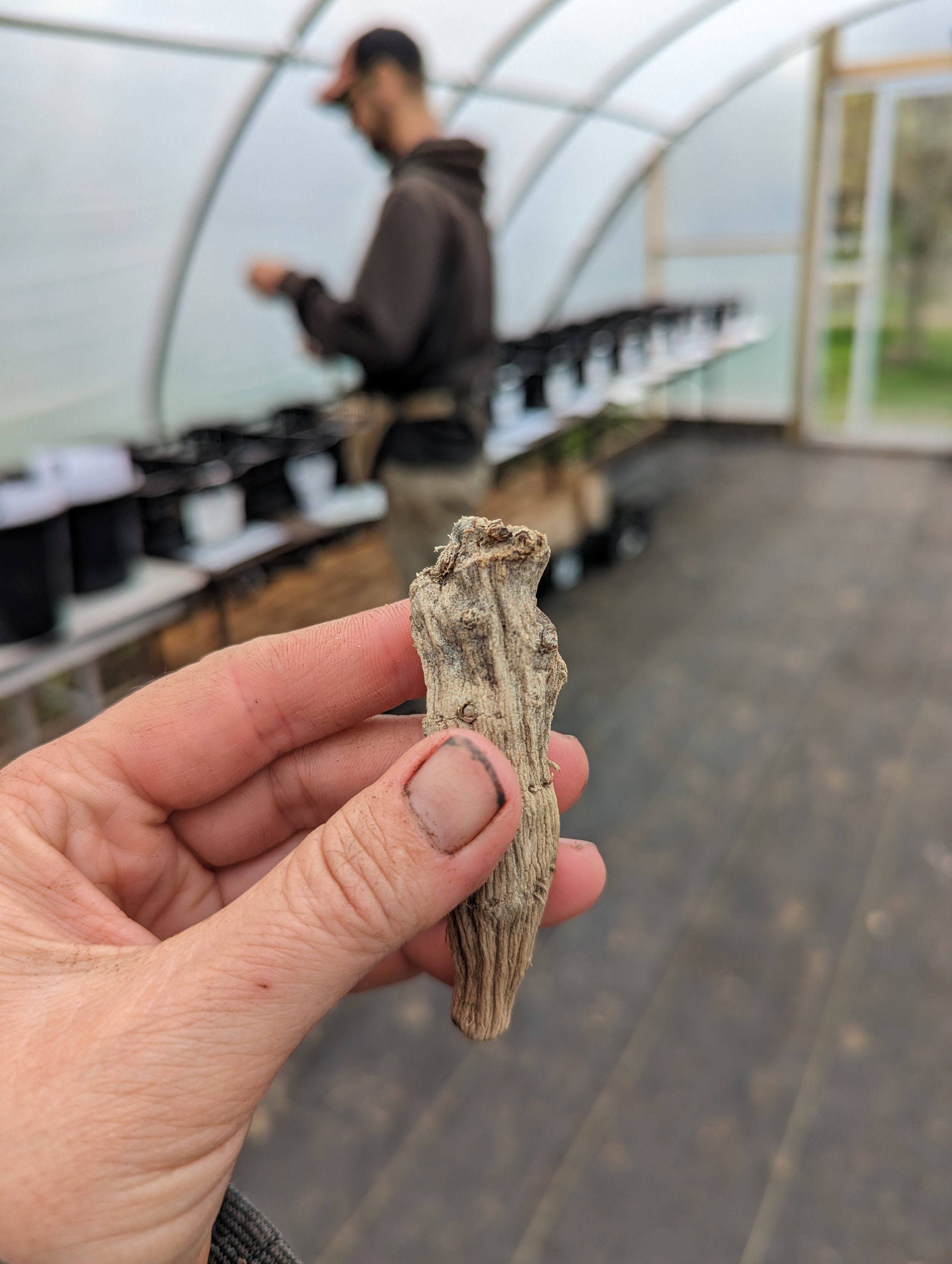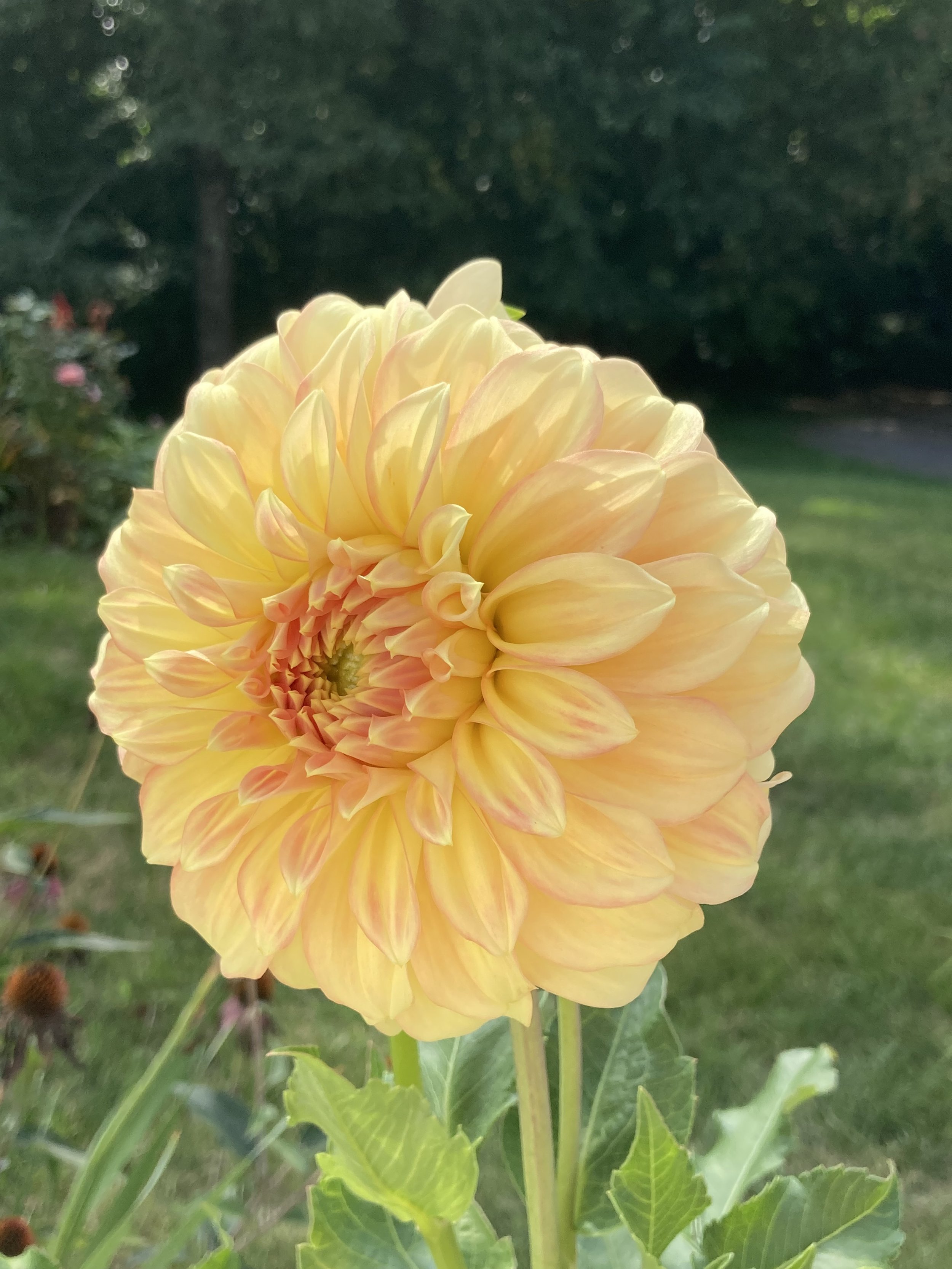All About Dahlia Tubers
All About Dahlia Tubers
Are you a beginner dahlia grower? If so, you probably have lots of questions about dahlias and how they are grown. I’m here to help answer some of your questions!
1. How are dahlias grown?
Dahlias are grown from tubers, which are “bulbs” that grow underground. Dahlia tubers are a lot like potatoes - you plant one tuber and end up with many more at the end of the season.
Dahlias CAN be grown from seed, but dahlias grown from seed are not genetically stable and often turn out to be “duds”, with irregular forms and deformed petals, like the one pictured below. I was told by Dahlia breeders that it takes planting about 800-1000 Dahlia seeds to discover a “diamond in the rough”… and I believe it!
If you’re mostly concerned about growing flowers for bees, Dahlias from seed is fine. But if you’re looking for beautiful blooms for bouquets or Dahlia shows, you’ll want to grow Dahlias from tubers, which are genetic “clones” of their mother plant.
Growing from tubers is the easiest and most popular way to grow dahlias. To grow a dahlia plant, all you need is ONE tuber with ONE “eye”/sprout.
A viable tuber needs to have an “Eye”, a neck and a body. If the “tail” is too long, you can cut off up to 3/4 of the tail and the tuber is still viable.
For new growers, locating the “eye” can be tricky at first, but with practice you’ll be able to spot them.
When you plant one tuber in the spring, the plant will grow and multiply… and when you dig up the plant in the fall, you will have MULTIPLE tubers! It’s like magic!
Yes, ALL of these tubers in the photo below grew from ONE tuber! Each one of these tubers can be planted out and now you have over a dozen plants!
2. Do all tubers look the same? Does the size of the tuber matter?
NO!!!!! There are thousands of different types of dahlias…. and each one grows it’s tubers a little differently. There is a shocking amount of variety in shape and size!
Some are tiny and slim, like a pencil. Some are short and stubby, with little to no neck. Some are huge and chunky. Some are skinny with loooooooong necks.
The size of the tuber is irrelevant in most cases. We grow some varieties of dahlias that never produce tubers larger than our pinky, while some produce HUGE tubers that we have to cut down to size. It all depends on the variety of dahlia.
Here is an example of some of the dahlias we grow. Notice how all of them look completely different! Each one of these tubers is good example of their variety.
And here are a few more examples of viable tubers. Some of them look pretty funny ;)
3. My tubers look a little shriveled. Will they still grow?
In most cases, YES. Remember, as long as the tuber has an eye, it will grow.
Give the tuber a squeeze.
Is it firm and pliable? It’s probably still ok. Plant it!
Is it slimy, mushy and oozing? Throw it out.
Is it brittle and cracked? Throw it out.
Here is an example of a tuber that is completely dried out and desiccated, and does not have an eye. This one will not grow.
This tuber felt suspect, so we cut it open. Healthy Dahlias have clean firm white tissue. This one is rotting.
Below is an example of one that looks ugly, wrinkly and a little dried out…. but it will still grow. Notice the eye at the top. This tuber is not pretty, but it will still get the job done!
If all your tubers are shriveled and dried out, it means your storage space is too dry. Dahlias do best stored in locations that stay about 40F with 80-85% humidity.
Do not assume that tubers are worthless just because they look ugly. Those “ugly” tubers usually grow just fine. On our farm, we sell the “pretty” tubers and keep the “ugly” ones for ourselves. We love ugly tubers ;)
Below is an example of an “ugly tuber”… and the beautiful bloom it grew!
4. I DIVIDED MY TUBERS AND NOW THEY HAVE BLUE MOLD WHERE I CUT THEM! What do I do?!?
Step One: Take a deep breath and relax. :) It’s probably going to be ok.
Step Two: Check the tuber. If it’s slimy, oozing or mushy… discard the tubers. If it’s still somewhat firm (not slimy, oozing or mushy), proceed.
Step Three: Wipe off the mold with damp towel or brush it off.
This type of blue mold is very common. It’s usually a surface mold and it does not penetrate the tuber. Most often this mold grows because the humidity level in your storage space is too high. Try moving the tubers to a location that is a bit less humid.
See the “Before” and “After” photos below. Underneath the blue mold, the tuber is still firm.
5. Can I “pot up” my dahlia tubers to give them a head start?
Absolutely! We pot up a couple varieties each year, but the vast majority are NOT started in pots, simply because we don’t have room to pot up 1,000+ tubers ;)
Potting up is easy. Simply fill a 4” pot with potting soil, stick the tail end of the tuber in the soil and leave the head sticking out. Keep the soil slightly damp, allowing it to dry out between waterings. Do NOT over-water, as tubers can rot in wet conditions.
Keep the pots in a warm, sunny spot.
(You can watch a video demonstration of the process HERE)
After a few weeks, you will notice the eyes beginning to sprout and roots poking out of the bottom of the pot. Hooray! The tuber has done it’s job! The tuber is simply a food source until the plant creates roots.
Roots starting to poke out the bottom!
Eventually, the eye will turn into a sprout!
Bonus: If you are plant savvy and know how to make “cuttings” of plants, you can make cuttings from your tubers and propagate/clone them that way. It generally has about at 50-75% success rate, depending on your skill level. It does NOT hurt or damage the tuber, and the tuber will send up more sprouts to replace the one you cut off.
When it’s time to plant them outside, simply dig a hole about 6 inches deep and wide. Take the sprouted tuber out of the pot and bury it so the head is a couple inches below the surface of the soil. If the sprout sticks out of the soil, great!
If not, no worries! It will grow and emerge from the soil in no time. And if you accidentally break off the sprout - do not panic! It will grow a new one.
If you are planting a potted up, actively growing Dahlia plant with leaves/foliage, be sure to water it well at planting time and water the plant regularly as it’s growing.
In contrast, if you are planting a Dahlia tuber (not actively growing leaves), be sure to avoid watering until AFTER you see the sprouts/leaves emerging from the ground.
Hope this information helps! if you have any more questions, leave them below!
-Lori
Want more info about dahlias? Here you go!
The Beginner’s Guide to Growing Dahlias
Too Soon to Plant Your Dahlias? Here’s What to Do



